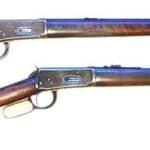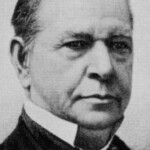
Introduction to the .25-20 cartridge
The .25-20 cartridge (also known as the .25-20 WCF) holds a significant place in firearms history, boasting a rich legacy that spans several decades. This small-caliber cartridge was invented in the late 19th century and gained popularity for its versatility and performance. Let's delve into the intriguing details surrounding its creation, usage, predecessors, successors, and performance.
The .25-20 cartridge was introduced in 1893 by Winchester Repeating Arms Company, a renowned firearms manufacturer in the United States. It was derived from the .32-20 Winchester by necking it down to .25 caliber. The Winchester Model 1892 was the first rifle chambered for it. Its development was primarily driven by the demand for a cartridge suitable for small game hunting and varmint control. This particular caliber designation represents the bullet diameter (0.25 inches) and the powder charge weight (20 grains) used in the cartridge.
Initially, the .25-20 cartridge was chambered in Winchester's lever-action rifles, specifically the Model 1892. This rifle gained popularity among hunters, as they provided quick follow-up shots and were particularly well-suited for shooting small game, such as rabbits, squirrels, and varmints. Lever-action rifles offered a rapid rate of fire, making them ideal for hunting in dense forests or fields.
Other manufacturers also chambered rifles for the .25-20, including Marlin's Model 1894 and Savage's Model 23 bolt-action rifle.
Predecessors and Successors
The .32-20 cartridge was introduced in 1882. The .25-20, introduced later in 1895, was based on the .32-20 case, which was necked down to accept a .25 caliber (.257-inch-diameter) bullet. The original .32-20 used a .312-inch-diameter bullet. Both were originally black powder cartridges and the .25-20 sought a balance between power and efficiency for small game and varmint hunting.
As for successors, the .25-20 cartridge itself did not spawn any direct offspring. However, its popularity waned over time with the advent of more potent and versatile cartridges, eventually leading to its decline in mainstream use. The .25-20 gradually died out in favor of improved cartridges, such as the .22 Hornet and .218 Bee, which offered better long-range performance and higher velocities. Also, the rise of bolt-action rifles made older lever-action calibers less appealing to hunters.
Performance
In terms of performance, the .25-20 cartridge achieved moderate velocities and delivered sufficient energy for its intended purpose. It typically fired a 60 to 86-grain bullet, with blackpowder muzzle velocities ranging from 1,200 to 1,500 feet per second. With modern smokeless powder loads, velocities may range from 1,200-2,100 feet per second. This performance was adequate for hunting small game and varmints at close to moderate ranges. However, the .25-20 lacked the power and range necessary for larger game or long-distance shooting.
Conclusion
While the .25-20 cartridge may not be as prominent today as it once was, its historical significance and contribution to firearms development remain undeniable. It played a crucial role in the evolution of lever-action rifles and provided hunters with a reliable option for small game hunting and pest control. Its successors may have overtaken it in terms of performance, but the .25-20 cartridge will forever hold a place in the annals of firearms history as a testament to innovation and adaptability.
Read more about this and other old west cartridges here: (this book also contains reloading data!)

An excellent treatise on cast bullets for this cartridge can be found here.
If you know of any forums or sites that should be referenced on this listing, please let us know here.



